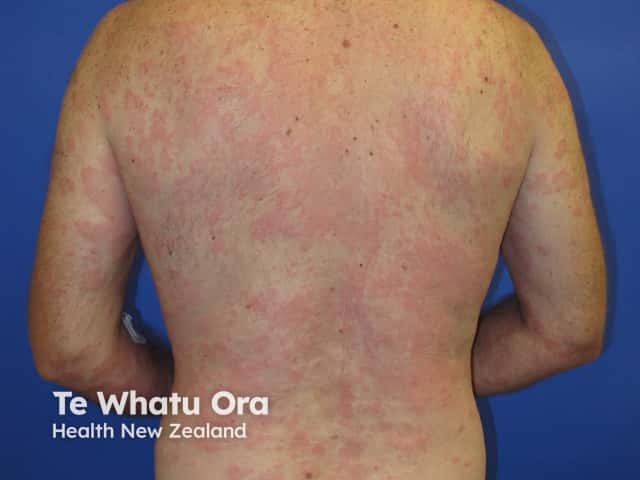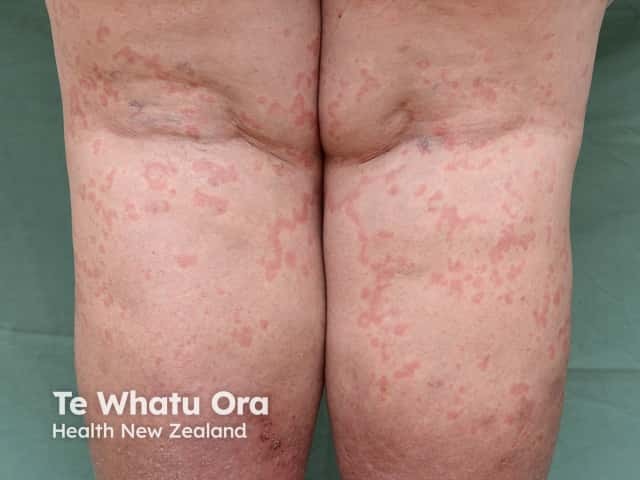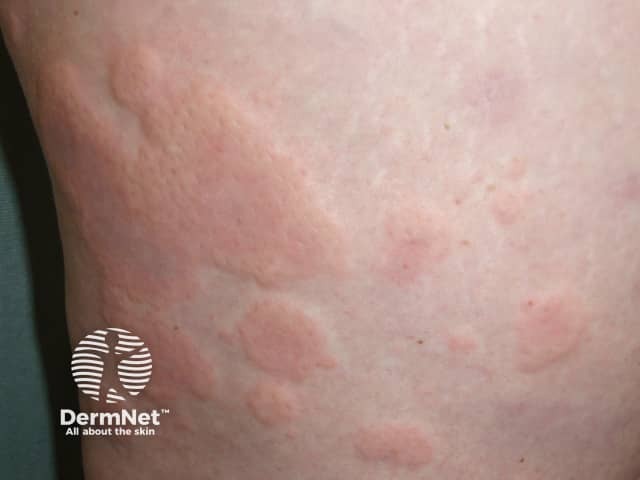Main menu
Common skin conditions

NEWS
Join DermNet PRO
Read more
Quick links
Author: Gerald Lee, 5th Year Medical Student, University of Auckland, New Zealand; Chief Editor: A/Prof Amanda Oakley, Dermatologist, Hamilton, New Zealand, August 2016.
Introduction How to use How it works Benefits Disadvantages Side effects
Autologous serum skin testing is an investigative test for autoimmune urticaria, which is a type of chronic urticaria. It is undertaken in specialist centres for some patients with chronic urticaria.
Normal immunoglobulin-E antibodies (IgE) activate IgE receptors (FceRI) on mast cells and basophils. These cells release histamine, an important mediator in allergic responses. Autoimmune urticaria is due to autoantibodies that bind to either these receptors or the IgE antibodies themselves. This causes inappropriate activation of the mast cells and basophils and release of histamine.
Autologous serum skin testing detects circulating autoantibodies, indicating an autoimmune origin in some patients with chronic urticaria.
Inducible chronic urticaria can be detected when a certain stimulus provokes wealing, such as cold air in cold urticaria, or scratching the skin in dermographism.
Spontaneous or ordinary chronic urticaria may have no obvious stimulus. The autologous serum skin test may be a useful tool for diagnosis because it confirms those cases due to autoimmunity. If the test is negative, spontaneous chronic urticaria is considered idiopathic, ie, it has no known cause.

Urticaria

Urticaria

Spontaneous urticaria
The patient should stop taking antihistamines 2–3 days before autologous serum skin testing, to ensure that their urticaria is active at the time of the test. Immunosuppressive agents may also be stopped up to 3 months before the test.
The test should not be performed in an area of skin that has had weals in the past 24 hours.
A positive result occurs when the weal formed where the serum is injected has a diameter that is at least 1.5 mm larger than the saline weal.
Autologous serum skin testing is relatively reliable, with a sensitivity of 70% and a specificity of 80%. It is inexpensive and straightforward to administer.
Autologous serum skin testing should be undertaken by an experienced investigator; a poor technique can lead to false positive or false negative results.
The test is not standardised, with various methods described in the literature and different criteria for a positive result.
Positive results may occur in patients that do not have chronic urticaria, for example:
Although a positive autologous serum skin test may indicate autoimmune urticaria, it does not reflect the severity of the disease.
Side effects are confined to injection site weals.